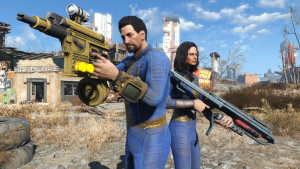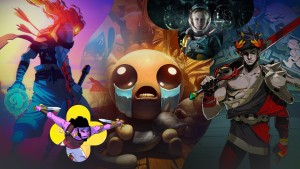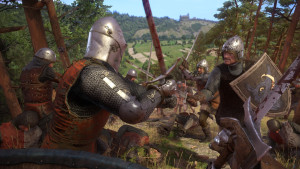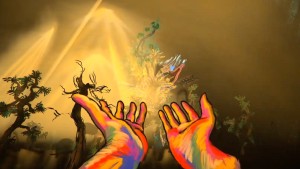Please support Game Informer. Print magazine subscriptions are less than $2 per issue
Vlambeer Discusses Nazi Concerns, Luftrausers' Historical Inspiration
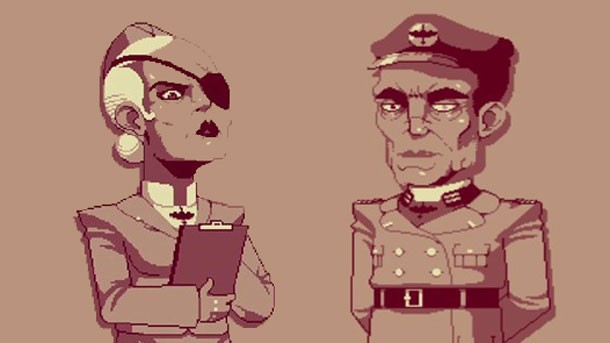
Vlambeer’s Luftrausers places players in the cockpit of an experimental warplane, letting them gun down enemies to become an ace pilot. The satisfying controls, customizable aircraft, and unique war footage aesthetic combine into an enticing package (read my review here). Luftrausers’ draws inspiration from the arms races spanning World War II to the Cold War, putting players on the side of a power-hungry military force. Some gamers have raised concerns that Vlambeer's title puts players in the role of a Nazi pilot. Vlambeer has officially responded to the accusations, denying suggestions that the characters are Nazis but recognizing that any artistic product is going to carry the player's interpretation. We also talked with Vlambeer’s Rami Ismail about treading the sensitive line between a fictitious conflict involving absurd super weapons and drawing on historically impactful Soviet and Nazi themes.
Note: The majority of the quotes from Ismail in this story are from an interview conducted prior to Vlambeer's official response.
"From our perspective, we do not cast our player as a Nazi pilot," says Ismail on a blog post on Vlambeer's website. "Luftrausers is a dogfighting game very much inspired by a very specific century in the history of mankind. Somewhere between the 1900’s and the 1980’s, there was a period in which military intelligence was capable of determining whether an opposing military force was working on secret weapons, but not quite what those weapons were."
The most obvious connection between Vlambeer’s title and real-world history lies in the name itself. During World War II, the Nazi air force was named the Luftwaffe. German pilots dominated Europe’s skies, with pilots Erich “Bubi” Hartmann and Gerhard Barkhom’s racking up hundreds of aerial victories. While “luft” translates to “air” and “waffe” to “weapon” or “arm”, “rauser” isn’t an actual German word.
While Vlambeer washes its hands of official in-game connections to history, a handful of devious NPCs resembling German soldiers assist you. A highly decorated, uniformed superior wears the iconic peaked cap, with a Luftrauser logo replacing the German eagle symbol. A conniving R&D scientist and eye-patched records officer round out the scant, yet visually striking cast. There are no swastikas, iron crosses, or other Nazi iconography, but for all intents and purposes I felt like I was playing a German pilot.
Many games have represented Nazis and Soviets as enemies, such as Call of Duty and Wolfenstein. Entries in these franchises also allow players to control German soldiers, though these characters are generally little more than palette swaps to facilitate multiplayer purposes. Luftrausers treads sensitive territory by placing players in a tongue-in-cheek military force inspired by history’s villains.
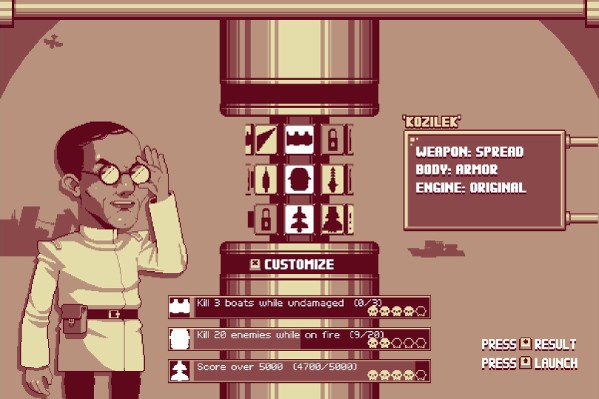
“To be honest, some of them are just flat-out based on Indiana Jones, while other designs are based on movies about the Cold War,” Ismail tells us in a one-on-one interview prior to the official response. “We wanted you to be the bad guy with the super weapon.”
Before nuclear bombs changed the nature of warfare, armed forces thoroughly researched weapons ranging from theoretically feasible to flat-out absurd. Vlambeer scoured declassified military documents for inspiration.
“There was a really irrational fear in the military intelligence that every country that was involved in World War II and the Cold War, that the hostile side had super weapons,” Ismail says. “Like, weaponized dolphins, UFOs, flying fortresses, lasers, mind control, and stuff like that.
“It's a really common plot device in a lot of entertainment,” Ismail says. "The super weapon was actually a real concern for an extended period of time in human history. It actually has been for a really long time… Like the Soviets at some point actually invented an airplane that was meant to fly straight over water, like five meters high. That’s where we got the underwater body [in Luftrausers] because, hey, maybe they could go underwater.”
Of course super weapons don’t build themselves, so Vlambeer set out to design a military force that fit the mold for risky, abnormal R&D.
“We wanted a game that was basically about a completely irrational, fictitious airplane that for some reason people really thought would exist,” Ismail says. “So from there, if you go down that rabbit hole, we needed an antagonist that you would play that would be somewhat recognizable, but not actually an existing, real force. We sort of landed on a combination between World War II aesthetics and Cold War aesthetics.”
While the appearance of the player's faction is mostly ambiguous, the inspirational connections to World War II are a bit clearer during a brief, climactic cutscene in which the player guns down an enemy blimp. As the zeppelin goes down in flames, the view zooms in on a man inside, supposedly the enemy's leader. The cigar, signature bow tie, and overall appearance of this character resembles Winston Churchill, the United Kingdom's Prime Minister during WWII. I asked Ismail about the design decisions that went into creating this briefly highlighted character.
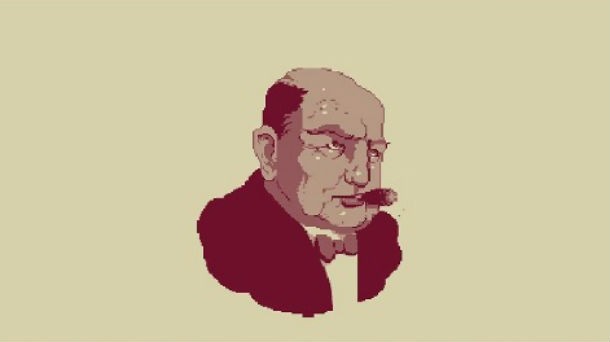
"While the player faction is undefined, we grounded the game in an alternate 20th century, somewhere between WWII and the Cold War, so it made sense to us that a war strategist like that would be the ultimate enemy from a hostile perspective," he says.
I asked Ismail if Vlambeer was ever concerned that this scene would cause controversy.
"It makes sense in the context of the game, so no, we weren't," he says. "I think we still aren't, even though some people have voiced discomfort with the game. Somebody like that would probably be the ultimate enemy for this force, and we wanted to be genuine about that too.
"We think criticism like this is something we have to accept. If games are an artistic medium we have to accept that interpretation is in the middle between what we intend to create and the frame of reference of the player. That means that sometimes, that interpretation is not what we personally intended. We don't know how responsible we can be for every single interpretation, but regardless we're sorry our game has the affordance to be interpreted in a hurtful way. We don't intend to remind victims, survivors and their offspring of the atrocities that occured during the war, and we definitely did not intend this game to be about any of those things."
Ismail understands the historical significance of these tyrannical military forces, and the deep scar they’ve left on humanity.
“We tried to make sure that none of it actually directly referred to any historical events,” he says. “In our mind, this is a fictitious war with a fictitious enemy…”
Avoiding too strong a connection to World War II was important for the developer. Vlambeer's Ismail and his partner Jan Willem Nijman were born and raised in the Netherlands, a country with tragic links to World War II.
“It’s a really difficult line to walk,” Ismail says. “It’s something that we’d been arguing about and wondering about. We talked to a lot of people about it. A lot of people that were either descendants of people that were in the war or victims of the war. It is a difficult line, but I think we found a line where people understand that this is not a reference or a value judgment. It is an aesthetic that comes with this specific subject material that we wanted to portray. And it’s a game about super weapons, right? It’s not a game about anything else.”

